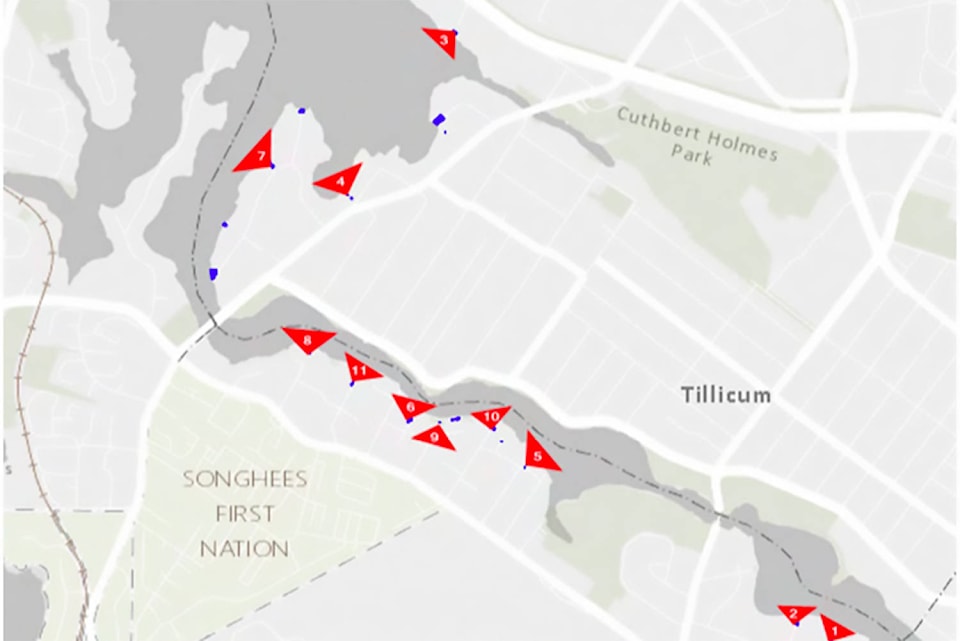Local environmentalists are calling on Saanich to develop a strategy to stop private encroachment upon public waterfront land, while restoring lands where private encroachment has already compromised public access.
“We hope that the [municipality] will take immediate action to restore access and develop a long-term policy,” said Kelly Twa, a second-year law student at the University of Victoria, with the Environmental Law Centre Centre (ELC). She made these comments in presenting a 2017 report that the ELC prepared on behalf of the Veins of Life Watershed Society.
The report claims Saanich along with Esquimalt might have been “failing their duty to ensure that publicly owned Gorge waterfront lands actually remain public.”
The report specifically identifies 11 sites — three on the Saanich side of the waterway, eight on Esquimalt’s side — where this phenomenon might have happened.
The report matches aerial photos of property lines with current photos that show homeowners have been using public lands to park their boats, place garbage bins and extend their driveways in ways that leave the public unaware that this land is public.
Twa said this type of encroachment might be happening across the District in calling on Saanich to restore public access in the three identified locations. Twa also asked Saanich to launch a survey across Saanich to identify other areas, and initiate a public education campaign.
Twa said restoration of these sites would not only have ecologically benefits, but also economic benefits by creating additional recreation opportunities.
But if this language sounds forceful, the report itself couches its findings in the conditional, calling its findings “preliminary” and “subject to possible correction.” In fact, it eschews any definitive conclusions as it calls on Saanich and Esquimalt to investigate these 11 cases where “public assets may, or may not, have been lost or compromised.”
This tentative tone also appears elsewhere. “Finally, note that we ascribe no fault to any private landowners or neighbours — many of whom may be unaware of where municipal land boundaries are,” it reads. “The fault, if any, lies with local governments that fail to zealously protect the property rights of the general public.”
Saanich last year acknowledged the three Saanich locations as public right-of-ways. But it has also thrown cold water on calls to improve them — at least initially.
Harley Machielse, Saanich’s director of engineering, said the three locations “have been generally left in an undeveloped natural state and are not intended as formal public access points.”
Efforts to “convert” these sites into “more formal access points” would require “extensive engineering of structures and bank stabilization” as well as “assessing the potential environmental impacts to mudflats and mature trees,” said Machielse.
“In consideration of other District priorities, overall benefit to the community, potential upfront and ongoing costs, and environmental impacts, formalizing access to these locations is not a priority at this time,” he said.
John Roe, founder of the Veins of Life Watershed Society, does not appear deterred. He said he will go forward with a proposal to find the necessary resources to help restore some of these sites. Roe said their preservation is crucial to the future preservation of greenspace and the ecological health of the region.
In fact, Roe thinks the number of sites is actually higher than the 11 identified in the report.
“This is just the tip of the ice-berg,” he said, a point Twa echoed in her remarks.
Council unanimously accepted the report, and forwarded it to staff for a review that would also consider other areas of Saanich where private use might interfere with public access, such as Mount Douglas Park.
Coun. Judy Brownoff said this issue is not a priority for Saanich, but staff might be able to bring forward some ideas.
“The point of access is germane,” said Coun. Fred Haynes.
